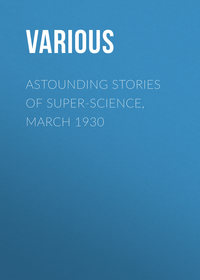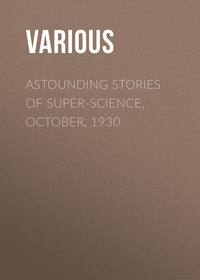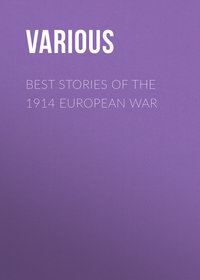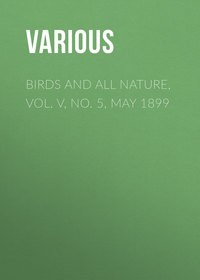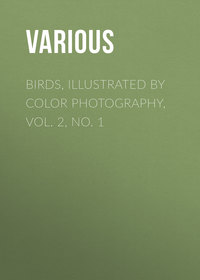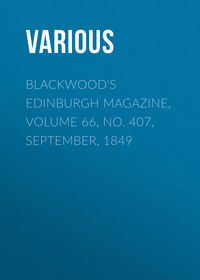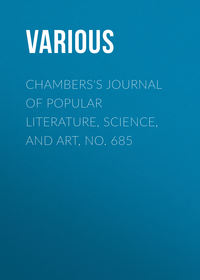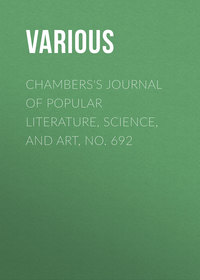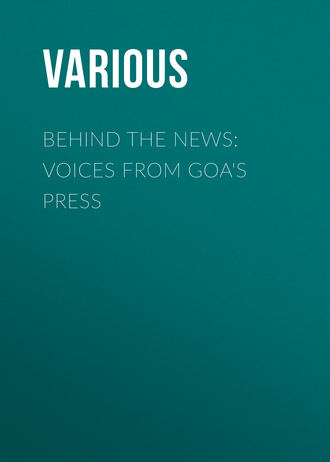 полная версия
полная версияПолная версия
Behind the News: Voices from Goa's Press
Presently, hockey is in a lamentable state, with little or no activity being held and it is more tragic because in the past, Goans elsewhere have represented India. Players like Leo Pinto, Walter D'Souza, Maxie Vaz, Lawrie Fernandes, Reggie Rodrigues, John Mascarenhas and many women internationals.
Football: Thanks to the centuries-old legacy, starting with the presence of the British troops in Goa and the Portuguese, both of whom had a passion for the game, football still remained the craze in the state and it prospered with players using the paddy fields to hone their skills. These details I have mentioned in the book I later published titled Soccer and Goa, on behalf of the Government of Goa.
This enthusiasm was carried forward by leaps and bounds, making Goa one of the most feared of states in the country, throwing up players of repute. Both the clubs and the Goa teams, won tournaments all over the country, with professionalism coming in. No less credit to the founder members of the newly constituted Goa Football Association, which was created after disbanding the erstwhile Association that existed before Liberation and 1961.
Of particular note was the staging of a football match, featuring a team of women, during the Carnival season, on March 4, 1973, at the Police ground in Panaji, between Eves and Adams. This was organised by us members of the Clube Vasco da Gama, and I will stick out my neck to say that it was the first time a match was played with a women's team. Unless, somebody can prove to the contrary.
Athletics: This universally acclaimed discipline as the 'mother of all games and sports', did not progress as desired. On August 1, 1969, Prabhakar Sinari, Francisco Braganza, Rui Carvalho, Domnic Fernandes and myself, got together and formed the Goa Amateur Athletic Association, which functions till today, though with mixed results.
We did win plenty of medals at the National level, but nothing at the international level. Among the main drawbacks were, and still are, finance, lack of infrastructural facilities, including grounds and a suitable running track and of course trained officials. The situation today is much improved, with the government providing coaching facilities and other incentives, especially at the school and college level.
Yet, apart from football, athletics, swimming and taekwondo, which have brought a lot of honours to the state in the past few years, there is little to shout about in the other disciplines. There are a lot of pontification made by the governments, often with political considerations, and these have not been good for the progress of sporting activity in Goa.
As for me, my stint in Goa has been rewarding. Being bestowed with the prestigious and highest state award, the Jivbadada Kerkar Award for Best Organiser for the year 1984-85. Reporting two Olympic Games, at Montreal and Los Angeles, the World Cup hockey at Sydney, the World Amateur Boxing Championships in Bombay, where I also shared the mike for the English commentary, the Asian Games, Permit meets and Nationals in the country, in the capacity of an official, have all been a great experience, besides allowing me the opportunity to globe trot.
One also produced and edited Goa's first sports weekly titled Goal, in 1976-77, and later in 1996, I edited the bilingual fortnightly Konkan Mail, both having to be discontinued due to lack of support.
There were different reasons and circumstances for the starting of these two publications. I had been working as a correspondent for Sportsweek of Bombay, and the idea of starting the Goal came from there.
With sports picking up, one felt there was scope for a weekly focussing mainly on local sports affairs. I was aware that in a venture of this type, I would be requiring a lot of money, which I did not have. But what weighed in my favour was the fact that in partnership with a friend of mine, we had taken the Diario da Noite press, owned by Luis de Menezes, on a contract basis, to print a full-fledged paper the Goa Monitor, owned by Erasmo Sequeira in 1977, under the name of Polygot Publication, Campal.
The Goal, therefore, could be a by-product, as the infrastructure for producing it, including the printing staff, was in place. The only cost involved would be the news-print for the tabloid. As for the writing part, I was going to do most of it, while a few friends of mine promised to write gratis. Unfortunately for us, the Goa Monitor was forced to fold up, as Sequeira's press staff went on strike. It also meant the premature death of "Goal", on which one had pinned high hopes, as it was steadily picking up in sales and, surprisingly, even getting a few advertisements from big industrial houses.
In the case of Konkan Mail, the whole concept was born out of a missionary zeal.
When I approached Mathias Vaz, owner of the Maureen Printing Press, and P.M. Vaz, proprietor of Manvins Courier Service and Manvins Hotel, with the idea of bringing out a bilingual paper, which would contain news catering to both English-language and Roman Konkani readers, they immediately agreed.
Papers which published general news in Konkani, were in Devnagri script, which many of the Catholics, specially those in the 30+ age group, could simply not read. It was for this section that the Konkan Mail would cater to. While Mathias handled the entire printing, P.M.Vaz would take care of the distribution and couriering part, besides providing office space and the use of his computers in his hotel, while I would handle the editing.
The soft launch of the first copy of 18 pages, costing Rs. 2, was done by the Member of Parliament Eduardo Faleiro, in the city, where a few prominent citizens were the invitees.
For the nearly four years the paper was regularly published, there was great enthusiasm shown by the readers. But this in itself is not enough for the success of a paper, as any publisher will vouch, without advertisements, which is the main revenue provider. And that is exactly what we lacked. This could be because of a variety of factors, including perhaps, bad management. After several appeals to the readers via the editorials for such revenue support bore no results, we decided to suspend publication, as we could no longer continue suffering losses. We still hope to restart, provided the finance is available; but for the moment we haven't a clue of where this money is going to come from.
Though sports has been my first love, reporting on sports has been an add on. Except for a brief stint on the sports desk of the Free Press Journal, my main grounding on the news and reporting desk was with the Times of India, Bombay, and then on The Navhind Times and back to the Goa page of the Times of India, Bangalore edition, as a stringer, where I also did a lot of sports reporting. I believe that sports journalism helps a lot in the shaping of a good all-round writer, simply because it gives one a free reign to use descriptive language and a variety of verbiage, ordinarily not suited for general reporting.
Be that as it may, I was fortunate enough to work as a correspondent for many publications. Of particular mention was the Indian Post, run by the Singhanias in Bombay and edited by that time by S. Nihal Singh. The paper was to run into trouble later on and later had to close down. By this time, Vinod Mehta had taken charge as the Editor, and subsequently quit, to start The Independent, belonging to the Times of India group. Many of us with the Indian Post joined the editorial team under his leadership in 1989. Incidentally, the Executive Editor, Dina Vakil, who left The Independent to join the Times of India, thanked me in a letter dated May 4, 1990 for my support to the newspaper. I have my utmost regard for all these three, Nihal Singh, Vinod Mehta and Dina Vakil, for their personal gestures.
Among the other major papers where I served as correspondent, were the Financial Express for nine years, the Afternoon, the Tribuna of then Portuguese Macau, a news agency from Lisbon Noticias de Portugal and the NCWC News Service, Massachusetts, USA. It was hard work, and when I look back at those times, I am amazed how I was able to keep to my schedules and enjoy doing it.
Such challenges apart, it has been a great party always and I had a wow of a time.
Chapter 21: From journalist… to publisher
Niraj Naik, known for his coverage of rural and remote Goa in the 'nineties, is today publisher and editor of the Digital Goa. This fortnightly, the only specialist publication of its kind in Goa – covers the IT industry in the state. He has worked in the Delhi media, and was located for some time in Malaysia.
Without doubt, one owes one's career in journalism to the emergence of Konknni (Devnagari) journalism with the launch of Sunaparant. One was then still a college-going lad, having very strong views on the number of issues. The Konknni agitation was at its peak and I was a staunch Konknni supporter. On a parallel track, one had also started questioning not only the obvious excesses flowing from religious fundamentalism but also ritualism and, subsequently, the very concept of God.
It was a time when I was also leaning towards socialism. Contrary to the projected image, life around you in Goa can tend to get suffocating. Given my rural background, I wouldn't have had confidence to write in the English-language newspapers, and the bitterness generated in those days over the language issue prevented me to opt for Marathi.
So, the launch of first Devnagari-Konknni daily Sunaparant gave me the much needed platform to express myself. There was no looking back after that, and I wrote hundreds of articles in Sunaparant to make a vent to my inner feelings. Gradually, I switched my interest towards current affairs and hard news. In the meantime, one had a short stint as an activist, working on the number of socio-economic and environmental issues confronting Goa. But, my temperament did not allow me to stay there for long and I decided to come back to active journalism.
Herald was my obvious choice, given its image as the 'activist' newspaper and, at that time, being the only paper which had escaped from the clutches of all-pervading mining lobby, which till recently controlled most of the Goa press. My first pieces were a series on the socio-environmental impact of iron ore transportation in the village of remote Sanvordem, a problem that is otherwise very seldom noticed in distant Panaji, more so in the world of the English-language press.
It was one of the first comprehensive documentation of the explosive situation prevailing in this part of Sanguem Taluka, due to the unbridled ore transportation by over 500 trucks on a small stretch cutting across barely 17 kilometres, and passing through the densely populated village of Sanvordem.
Derek Almeida was the News Editor of Herald then. He was the one who encouraged me to do another series on the also-distant Canacona taluka, which was in the news in those days for opposing number of larger tourism projects. I actually spent a week in the different localities of Canacona, including a over-night stay at Cotigao wildlife sanctuary. This was followed by number of stories on the developmental and environmental issues in Goa.
Herald was going through a transition when I joined the paper. Diedre Sampayo-Fernandes had just taken over as the publisher of the Herald and was taking keen interest in the affairs of the paper. She made an unsuccessful attempt to streamline the functioning of organization. On the editorial front, Rajan Narayan had become almost defunct due to his deteriorating health. Devika Sequeira and Pamela D'Mello had just quit and Julio D'Silva (who, in the ever-so-political world of newspaper politics, was perceived as being close to Rajan Narayan) was brought into Panaji as the Chief Reporter, on shifting Alaric Gomes to Margao. Franky Fernandes of Vasco joined, shortly followed by Rupesh Samant. It was an entirely a fresh team.
For some reason, the reporting desk was given the lowest priority. I had to handle the reporting-desk single handedly for months together. Besides, also perceptible was the same instability at the top during those couple of years, around the mid-nineties. We saw as many as four to five mainly outstation deputy editors come and go. Hardly anybody could withstand the internal politics and rivalry. We were grappling in darkness in the absence of the required guidance. There wasn't any motivating force. Meanwhile, Julian also made her foray into reporting after working in the magazine section for couple of years.
The post of Chief Reporter was vacant for quite sometime following the resignation of Julio Da Silva. His perceived closeness with BJP had probably started long before he joined BJP, to contest Cuncolim constituency on that party's ticket in the 1998 Goa assembly elections. But ambition cost him both a career and a (political) seat. Meanwhile, Ashley do Rosario rejoined the Herald after a stint with The Navhind Times ended. After keeping him without designation for awhile, Ashley was finally given the post of Deputy Chief Reporter. To some of us, this trend – of using designations as carrots or baits, and apparently handed out in a manner far from fair – was demoralising, specially since we had run the show when nobody was around. Personally, one was never comfortable with mainstream reporting. My biggest 'weakness' was politics, or rather, a healthy skepticism about it. I always hated politics, more so the superficial level at which it gets reported in newspapers. Unfortunately, politics has long been the mainstay for our newspapers. This lopsided stress on politics in the media, especially in the Goan media, has not only undermined other genuine and more critical issues, but also given undue encouragement to petty politics and crooks.
One always wanted to focus on the more real issues of the people. But routine stories prevented devoting time to such a venture. Special stories of such a nature would usually imply going out of Panaji to the villages. Pressure of covering routine events prevented me to leave Panaji to chase these stories. Instead we had to cover some insignificant press conference of politician X or Y, or somebody else.
There were other beats like the police and courts, which had to be covered on daily basis. There was no appreciation for special or exclusive stories done, but missing of a routine story was taken note of, how-so-ever insignificant it may be. Leave aside incentives on exclusive stories but working in the Goa press can also mean that even travel bill were not reimbursed. This was a general trend in most of the newspapers. All this resulted into many a Panaji-based reporter turning into mere stenographers, ready for the next round of dictation. There seems to be unanimity amongst the desk staff and reporters that whatever words are uttered by a minister constitute the gospel truth, and that is the hot news worthy of wide coverage. This has resulted in ministers getting unwarranted prominent displays on front pages for the various announcements they make, but which more often than not never see the light of the day. I recollect a practice one reporter was engaged in. He would arrive at the Secretariat late afternoon, and would visit ministerial cabins to hunt for stories. There would be literally a begging for stories. Some ministers used to oblige, and needless to say, the story would get a prominent position in the next day's edition. The entire spectrum of Goa-based newspapers could be categorized on the basis of their political affiliations, stand on the language issue and the lobby they belong to. Though most of the papers shift their policies in favour of the ruling party of the day, the papers were strongly divided on the lines of language. All the Marathi newspapers, with the exception of the Rashtramat, supported Marathi. On the other hand, Sunaparant, Rashtramat and Herald supported Konknni, and some papers remained neutral or avoided a clear stand on this issue.
However, the major difference was the lobby they belong to. At that time, all the significant Goa-based papers, with the exception of Herald and Tarun Bharat, were owned by mining corporations. Needless to say, that there was a total blackout of all mining-related stories which showed the industry in poor light. This embargo exists till now. Only one difference has crept in; the Gomantak group, which publishes Gomantak (Marathi) and Gomantak Times, has been taken over by the Sakal group of Maharashtra. It is the worst kind of self censorship by a section of Goan press which deprives a voice to the thousands of people living in the mining belt in miserable conditions due to pollution of air, water and land. My discontent was growing as a journalist in a Goan newspaper. I was looking out for an opportunity to move out from here. And at the first opportunity, we – meaning, my wife and myself – descended in Delhi for the more enriching experience which completely changed my outlook towards life and helped to change the course of my career.
Taking on new roles…
I was back to Goa after a gap of two years. My stay in Delhi and a short stint in Malaysia was an enriching experience. It was a new life altogether. There was no question of joining any local paper for the very reason I had decided to quit it. The dream was to start something of my own; something different. The meteoric rise of IT had thrown up lots of opportunities. Goa too had made foray in the area of IT, and it had big plans. Goa had an edge over its counterparts due to her peculiar socio-economic conditions.
IT was nothing new for someone in the area of journalism, since we had been dealing with information all along. Having realized the power of information, it was my endeavour to harness the technology to make it an instrument of change.
With this objective in mind, I decided to set up a small company and named it Aparant Infomedia, (after the historical name for Goa). The basic objective of this venture was to bring the fruits of IT to the masses and use it to bring about a positive change amongst the lives of thousands of people, especially for the underprivileged.
An IT newspaper or magazine for Goa was just one idea amongst the many which the company aimed at. There were some innovative ideas to capitalize on the potential thrown up by the Internet, and particularly by e-mail, for the benefit of the common men. The paper got priority over other things simply because there was a need to create awareness amongst the masses.
There were a number of efforts underway in Goa in the area of IT by the government, industry, NGOs and the like . But there was a lack of co-ordination and hardly anybody knew what was going on in the other camp. Opportunity came calling, indicating that there was an urgent need to create a common forum for the discussion of IT-related issues and cost effective solutions.
This was priority Number One. Thus Goa's first IT fortnightly was born in the beginning of the year 2002. It was appropriately named Digital Goa, to encompass not only computer specific issues but the whole gamut of information technology even beyond computers.
Initially, this idea evoked a cautious response from both media stalwarts and IT professionals, some of whom even outright dismissed the idea as non-workable. Two individuals were exceptions to this rule, and they jumped onto the idea and have been a constant motivating factor all throughout i.e. GCCI President and D-Link General Manager Nitin Kunkolienkar and our own colleague Frederick Noronha.
One was aware of the average Goan's apathy towards reading, leaving aside few daily newspapers. This explains the fact that no periodical worth its name, and with a widespread readership, could be established in Goa, despite factors like Goa's high literacy, and relatively higher affluence levels. In the past one decade, a number of family-oriented and political magazines have hit the stands, only to disappear without making their mark. Those existing are struggling for their survival or are backed by big corporate houses. Then there was a new trend of free-sheeters that gripped Goa for a while. That too is seems to be slowly fading away.
On this backdrop, it was really a risky attempt to start a specialized magazine, leave alone the general magazine. Number one, there was no corporate house backing this effort nor did one have any savings to run it without any expected returns for the initial period. Most importantly, I did not have any other source of income since this was my full time activity.
One had to run the show all alone, which meant which meant facing demands of 12 hours or so of time each day. One must put it on record here that without the financial and moral support of my wife, Sangeeta, it would not have been possible for me to take this major risk.
It could be argued that most of the magazines which were closed down did not have a professional approach, consistency and utility value. These are critical factors for any publication's success. More so in a place like Goa. You need to study the mind of the reader, and his or her likes and dislikes. How a story is displayed is as important as the choice of the story itself. Readers should get something refreshing to read, and not just a rehash of stories already appeared in the daily newspapers.
For a product to succeed, it should also have some utility value to the readers. People are bombarded from all sides with knowledge and information in this information era. The job of the media is to screen and customize this information for the benefit of their readers. This is the role especially of the niche magazines, and it is the secret behind Digital Goa. The first issue of Digital Goa rolled out in the first week of April after a three months of running around. But very soon the initial enthusiasm was over and I had to face the stalk reality. Publication is the capital-intensive business. You have to go on pumping money for years before the product starts yielding fruits. So you need tremendous sustaining power.
Many times, one was confronted with existentialist dilemmas – whether or not to continue to invest money without any signs of returns. The returns were almost commensurate to the investments, and one point of time my investing power was almost exhausted. But I did not give up and the result is before the reader to judge.
It was only after a year that things started changing. The IT businesses who had earlier adopted a cautious wait-and-watch policy, realized that this was not a fly-by-night kind of venture, but a serious publication. Though one had some kind of a hi-and-bye relationship with a few players in the IT circuit, most of the people were unknown to me.
Secondly, this was my maiden experience of conducting business deals with the business class, being a journalist for all of my earlier years. It was a different experience altogether dealing with all types of people, including some who could be safely classified as crooks of the first degree.. But one passed this agni-pariksha (test by fire).
Being behind a small time publication, one had to be an all-rounder – looking after all areas of publication – editorial, circulation, advertising, printing, accounts, and whatever work was left to be done. One could obviously not appoint professionals and sufficient staff to look after all these departments, simply because overheads had to remain in check.
To prevent this venture going into the red, I managed the show mostly with one staff-member, and by deploying my Merces flat as the office. The first one year was really tough, as one could hardly recover the printing charges leave alone my salary.
It was a great eye opener; before starting, I had set a target of some 1000 subscribers within a couple of months at a subscription-fee of a fairly reasonable Rs 120 per year. But it did not take me long to come in terms with the harsh reality. Even my close friends did not bother to pay subscription as a support to my efforts. Those in the thick of IT sector of Goa also did not care to subscribe it too. One got the feeling that people were scared that with their single subscription I may get rich or Digital Goa could overnight grow into a big publication.
I experienced the much spoken-of Goan crab mentality very closely during this time. One thing that can be said with certainty is that Goans are very hostile towards those who make a new beginning. They would waste lots of their energies to discourage you from aiming higher, or pull you down, instead of supporting enterprising people. It is only when they feel that one has survived their onslaught and have made a mark, that they would be sympathetic to you.




